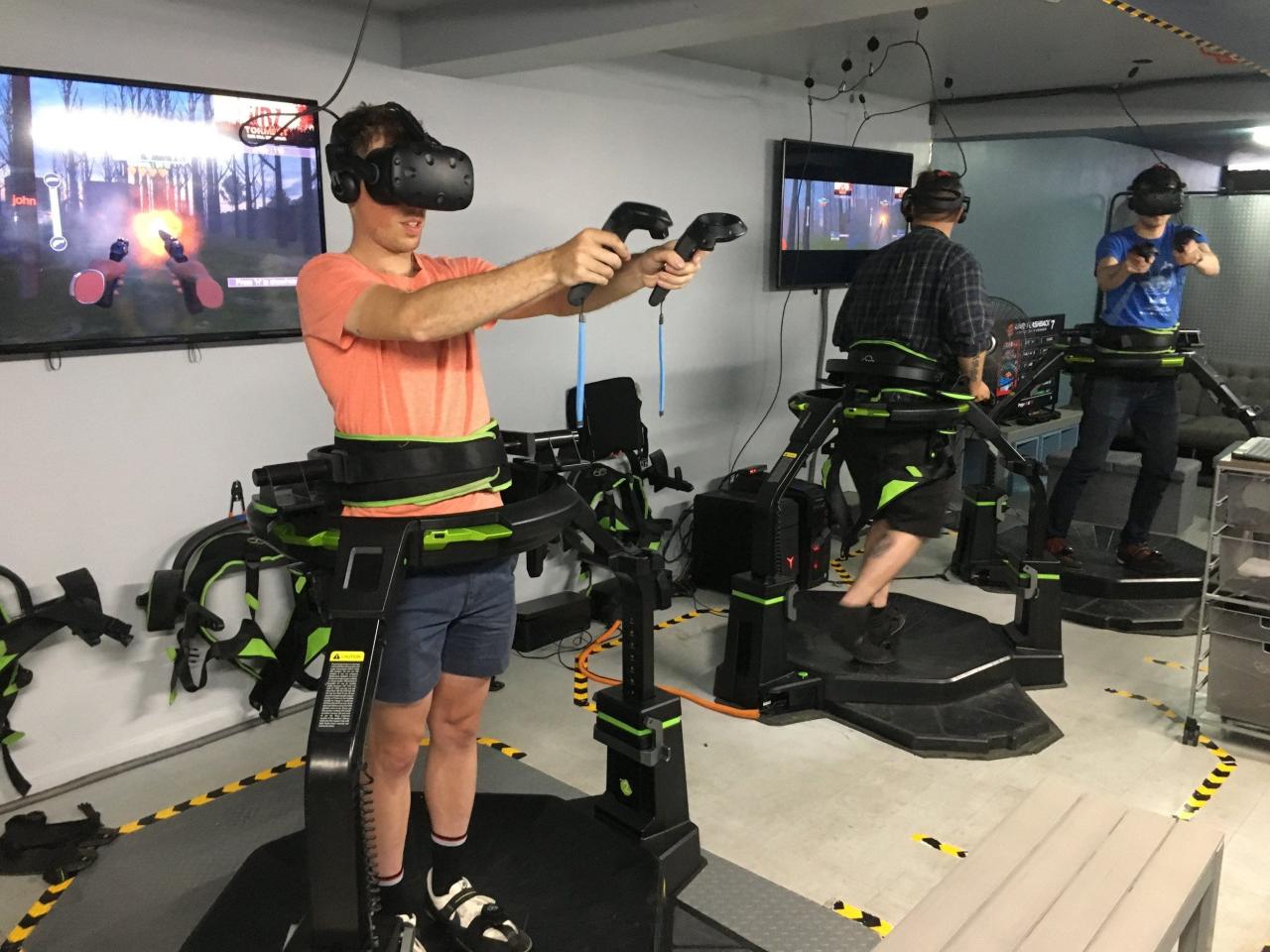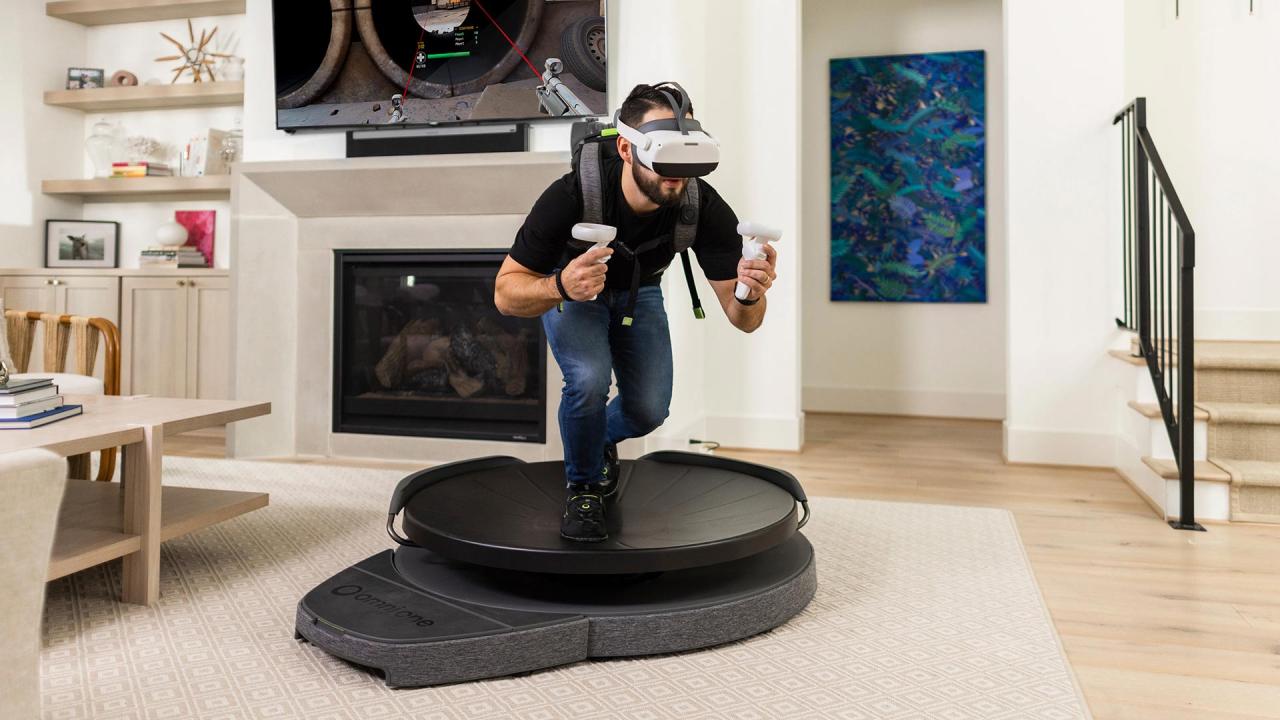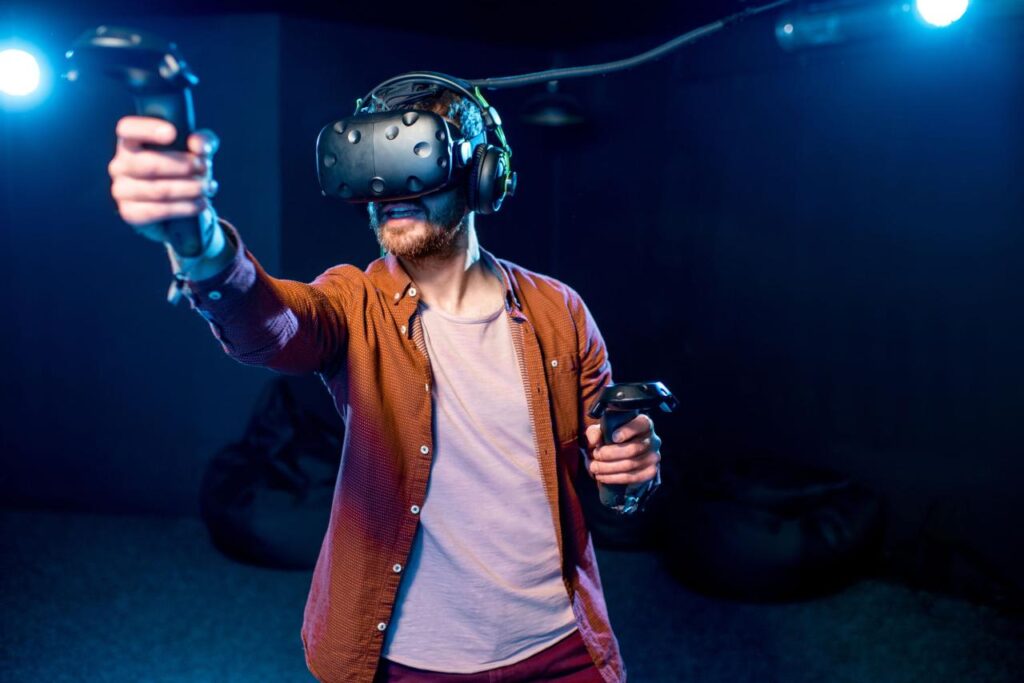The evolution of gaming has been a fascinating journey, progressing from simple, two-dimensional arcade cabinets to incredibly complex, photorealistic worlds rendered on powerful home consoles and computers.
However, no technological leap has been as profound or as immediately transformative as the arrival of Virtual Reality (VR), which shatters the traditional barrier of the screen and thrusts the player directly into the heart of the action.
This shift from passively observing a game world to actively inhabiting it represents the most significant change in how we interact with digital entertainment since the introduction of 3D graphics, promising an unparalleled level of immersion where your eyes, ears, and even your body’s movements dictate the experience.
Virtual Reality headsets, combined with highly intuitive motion controllers, create an illusion so convincing that your brain registers the digital environment as a genuine space, triggering real physical and emotional reactions that no flat-screen game can replicate, whether you’re dodging bullets or peering over a virtual cliff.
This convergence of high-fidelity optics, precise head and hand tracking, and spatial audio technology has ushered in a thrilling new era, fundamentally changing game design principles and offering novel ways to play, exercise, create, and socialize within digital landscapes.
The current generation of VR hardware is finally capable of delivering on the decades-old promise of true virtual worlds, and the industry is buzzing with the limitless potential this technology holds for the future of interactive storytelling and adrenaline-pumping gameplay.
What Makes VR Gaming So Different?

Virtual Reality gaming is not simply a graphical upgrade; it’s a complete change in the way games are experienced.
A. Achieving True Immersion
Immersion is the psychological state of being deeply engaged in an environment.
VR achieves true immersion by fully occupying the player’s senses, blocking out the real world.
The headset presents a unique, stereoscopic image to each eye, generating a powerful three-dimensional perception of depth.
This visual trickery convinces the brain that the digital space is a physically tangible reality.
B. Presence: The Ultimate Goal
Presence is a unique VR phenomenon where a player genuinely feels they are “there” in the virtual world.
It’s the moment you instinctively flinch or dodge an incoming virtual object, even though you know it’s not real.
Low-latency, six-degrees-of-freedom (6DOF) tracking is vital for achieving this feeling of presence.
6DOF means the system tracks your movement along three axes (left/right, up/down, forward/back) and three rotation angles (pitch, yaw, roll).
C. Intuitive Interaction
VR replaces traditional controllers with hand-tracked motion controllers.
These devices allow players to interact with the virtual environment using natural movements, such as grabbing, throwing, and aiming.
Many games utilize haptic feedback in the controllers to simulate the sensation of touching or hitting objects.
This natural interaction makes games feel more intuitive and physically engaging than ever before.
D. Spatial Audio for Realism
High-quality VR uses spatial audio, which accurately simulates sound direction and distance.
Hearing a sound behind you in the virtual world causes you to instinctively turn your head to look.
This aural realism significantly deepens the sense of immersion and heightens the tension in games.
The Essential Components of a VR Gaming Setup
To enjoy the best of VR gaming, you need a precise combination of sophisticated hardware working seamlessly together.
A. The Headset (HMD)
The Head-Mounted Display (HMD) is the single most important piece of equipment.
Modern HMDs are generally categorized as either PC-tethered or Standalone.
PC-tethered HMDs offer the highest graphical fidelity, relying on a powerful external computer to render the complex virtual worlds.
Standalone headsets, like the Meta Quest line, contain all the necessary hardware internally, offering freedom of movement without cables.
Key features include high refresh rates to ensure smooth motion and wide Field of View (FOV) for peripheral immersion.
B. Tracking Systems
Inside-out tracking is the dominant system today, where cameras built into the headset track the surrounding environment and the controllers.
This eliminates the need for external base stations or sensors, making setup much simpler.
Outside-in tracking, used by older or specific high-end systems, uses external cameras mounted in the room to track the headset and controllers.
Accurate, low-latency tracking is the backbone of a comfortable and believable VR experience.
C. Motion Controllers
The controllers are ergonomically designed devices held in each hand, often resembling a pair of split game controllers.
They include a variety of buttons, triggers, and thumbsticks, plus sensors to track their position and orientation in 3D space.
Some advanced controllers can also perform finger tracking, allowing players to realistically point, grip, or give a thumbs-up in the virtual world.
D. Play Space and Physical Safety
Every VR game requires a designated “play space,” which is the safe area cleared of obstacles.
The system uses a virtual boundary, often called a Guardian or Chaperone system, that appears when a player approaches the edge of their safe zone.
Setting up a large, clear play space is crucial for maximizing physical engagement and avoiding real-world bumps.
Popular Game Genres Transformed by VR

VR takes existing popular game genres and injects them with a new dimension of playability and visceral intensity.
A. First-Person Shooters (FPS)
VR makes FPS games incredibly intense by forcing players to physically aim, reload, and take cover.
The simple act of drawing a weapon from your hip and peering down the sights becomes an immersive physical task.
Games like Onward and Pavlov have built dedicated fan communities around their realistic, tactical VR combat.
B. Rhythm and Music Games
Rhythm games like Beat Saber have become cultural phenomena because VR makes the experience intensely physical and satisfying.
Players use their motion controllers as lightsabers to slice through blocks in time with music.
This genre successfully turns VR gaming into a genuine, highly engaging form of exercise.
C. Adventure and Exploration
VR is perfectly suited for exploration games where the joy comes from simply wandering through a detailed and massive world.
The sense of scale when looking up at a towering mountain or an ancient ruin is incomparable to a flat screen.
Titles like The Elder Scrolls V: Skyrim VR and No Man’s Sky VR allow players to revisit beloved worlds with a new sense of wonder.
D. Horror and Thriller Games
The immersive nature of VR amplifies the fear factor in horror games to an extreme degree.
Being inside a dark, claustrophobic environment with genuine spatial audio creates a deeply terrifying experience.
It’s a completely different emotional reaction when a monster is physically right in front of you.
E. Social and Sandbox Experiences
VR has fostered a new wave of social gaming where players gather in shared virtual spaces as customizable avatars.
These sandbox environments, such as VRChat, allow for spontaneous interactions and creative expression far beyond traditional voice chats.
The ability to use natural body language with other players makes the social experience feel genuinely personal.
The Design Revolution: How VR Changes Game Development
VR doesn’t just change how we play; it forces game developers to rethink every aspect of their craft, from movement to mechanics.
A. Solving the Movement Problem
One of the earliest challenges was locomotion, or how to move the player through a virtual world without causing motion sickness.
Developers invented solutions like teleportation, where players instantly jump short distances, or smooth locomotion, which uses analog sticks but with many comfort settings.
Current solutions often include options like vignettes (blinders that shrink the field of view during movement) to help alleviate nausea.
B. Interaction First, UI Second
In VR, the goal is to make all interactions physical and intuitive, rather than relying on on-screen menus.
Health bars or ammunition counts are often displayed on the player’s virtual wrist or weapon, not floating in the air.
A player may have to physically grab a key from their belt to unlock a virtual door, replacing a simple button press.
C. Scale and Physicality
Developers must pay close attention to real-world scale, ensuring virtual objects feel exactly the right size.
Physics engines must be tuned to make objects feel like they have appropriate weight and mass when handled with motion controllers.
The design focus shifts from merely pressing a button to performing a physical action.
D. Comfort and Accessibility
VR developers are increasingly focused on comfort options for a broader audience.
This includes seated modes, height adjustment, and various turning methods (snap turn vs. smooth turn).
The goal is to allow as many people as possible to enjoy the game without experiencing discomfort or motion sickness.
VR Gaming’s Massive Impact Beyond Entertainment
The technology pioneered in gaming is now being rapidly adopted by professional fields that require intense, realistic training and simulation.
A. Professional Training Simulators
Military forces use VR for flight simulation and ground combat practice, offering high-stakes training without risk or high equipment costs.
Surgeons practice complex medical procedures in hyper-realistic virtual operating rooms, refining their skills before working on actual patients.
Emergency responders train for catastrophic events, like fires or building collapses, in safe, replicable virtual environments.
B. Education and Learning
VR provides immersive educational content, allowing students to tour ancient Rome or dissect a frog without the need for physical materials.
Complex concepts, like astronomy or molecular structure, become easier to grasp when they can be viewed and manipulated in 3D space.
This hands-on, highly engaging approach significantly boosts learning retention rates.
C. Fitness and Health
VR is emerging as a powerful tool for home fitness, disguising exercise within engaging game mechanics.
Rhythm, sports, and boxing games incentivize players to move their entire body to succeed.
The “gamification” of exercise makes working out more enjoyable and sustainable for many users.
D. Architectural Visualization
Architects and construction teams use game engines and VR to allow clients to walk through a building design before it is even built.
This allows for identification of design flaws or adjustments to be made much earlier in the construction process, saving time and money.
The Future Trajectory of Gaming VR
The current technology is only the beginning; the next decade promises a true revolution in what VR gaming will look and feel like.
A. Lighter, Sleeker Hardware
Headsets will become significantly smaller and lighter, eventually resembling a pair of standard ski goggles or even sunglasses.
The shift to pancake optics is already making HMDs slimmer by folding the light path.
This focus on ergonomics will make VR sessions longer and more comfortable for everyone.
B. High-Fidelity Sensory Integration
Eye-tracking will allow for advanced graphical optimization through foveated rendering, making the entire scene sharper and more efficient.
Full-face haptics and olfactory (smell) feedback are under development to add even more layers of sensory realism.
This next generation will strive to stimulate nearly all five senses to blur the line between virtual and real.
C. Wireless and Cloud Dominance
The need for high-end local processing will diminish as Cloud VR streaming becomes the norm.
Players will connect wirelessly to powerful remote servers, streaming extremely high-fidelity virtual worlds to their lightweight headsets.
This democratizes access to top-tier VR experiences, regardless of a player’s local hardware budget.
D. True Metaverse Integration
Gaming will become a central pillar of the Metaverse, the vision of a persistent, shared, interconnected 3D virtual world.
Players will seamlessly jump between different game worlds and social hubs using the same avatar and inventory.
User-generated content (UGC) will explode, allowing players to build and monetize their own digital experiences within these worlds.
Conclusion
Virtual Reality gaming is a technological tidal wave that has permanently reshaped the entertainment landscape.
The unique ability of VR to create a sense of true presence is what sets it apart from all prior gaming mediums.
This revolution is driven by the continual advancement of lighter hardware and smarter, more comfortable software.
From intense competitive shooters to physical rhythm games, VR has created wholly new genres and transformed existing ones.
The principles developed by game designers are now improving training, education, and health across numerous professional fields.
We stand at the precipice of a future where virtual worlds will be nearly indistinguishable from reality.
The next generation of headsets promises an era of total sensory immersion and boundless creative freedom.
VR is not just the future of gaming; it is the next evolutionary step for human-computer interaction itself.







